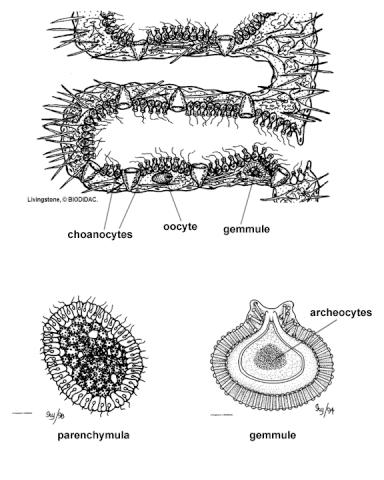Reproduction
Sponges may reproduce both sexually and asexually. Asexual reproduction is achieved predominantly through fragmentation via wave damage and interaction with grazing species (Rupert et al 2009).
Members of the Order Haplosclerida, may be both hermaphroditic and gonochoric within the same species. Sexual reproduction is achieved by the release of sperm, produced by the rupturing of enclosed choanocyte chambers that have sunk deep into the mesohyl becoming spermatic cysts ( see diagram below) and subsequent intake of sperm by neighboring sponges (Gaino 2007).

Fig : Layout of sexual reproductive components (University of Michigan 2007)
As viviparous organism, the egg carying oocyte, residing within the mesohyl (spread out or clustered), is fertilised becoming a gemmule. In this form the egg then develop within the parent. As the species is of the class Demospongiae, the fertilised eggs (See diagram) develop into parenchymella larva and are released after both the gemmule and cell wall rupture (Fromont 1993).
Porifera larvae are planktonic , providing the opportunity to achieve the best possible placement to proceed into its adult sessile form.
.jpg)
Fig: Rupturing of Gemmule (Rupert et al)
|